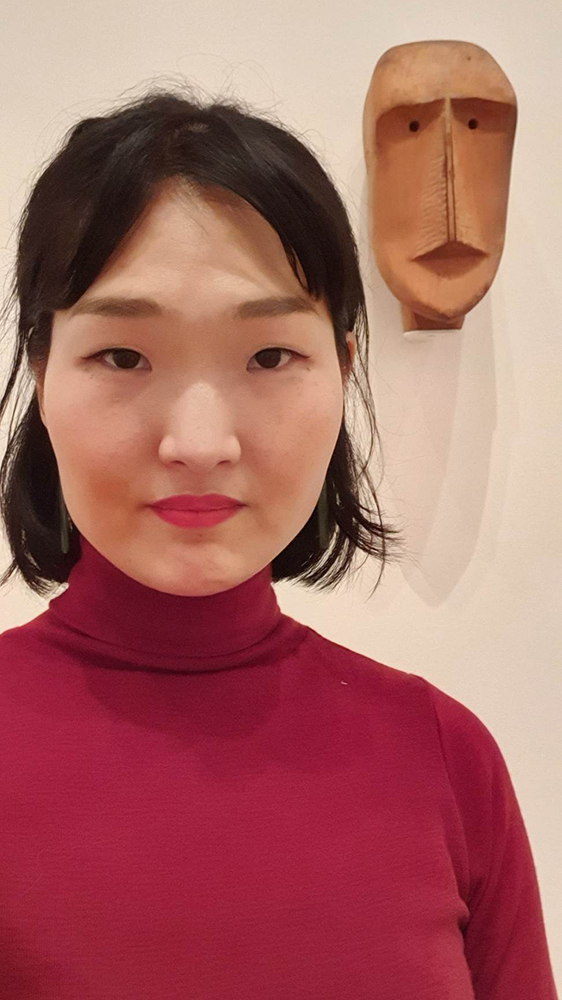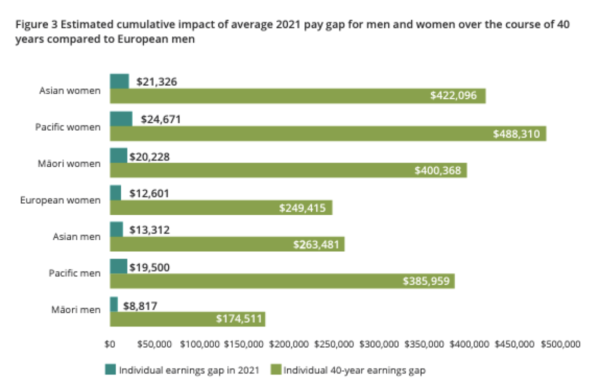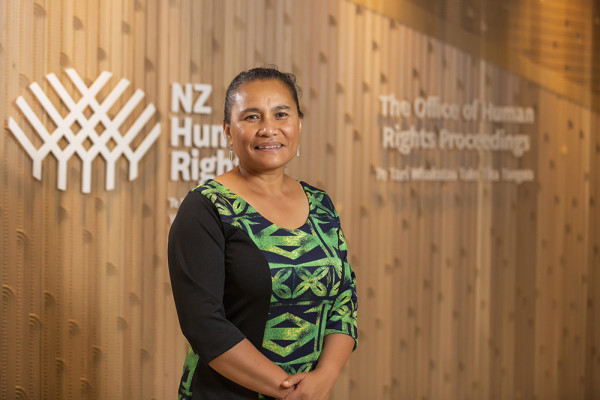By Maggie Shui
After completing her masters degree in art history, the only job Sun-Min Elle Park (박선민) was able to secure was as a receptionist on a $40,000 salary – just above minimum wage at the time.
She’d applied for countless jobs, ideally looking to work at a gallery or an NGO.
Meanwhile, her Pākehā boyfriend who’d also just completed a Master of Arts (in philosophy and public policy) nabbed himself a $65,000 government job after just a few applications.
Six months later, he was offered a $70,000 role. A few months after that came a $2000 pay bump he didn’t ask for.
Elle says it was a shock to see how her boyfriend glided through the job market with ease.
It made her realise that perhaps the way she was hustling was not normal.
“Even for me to get a minimum wage job, it was always a battle. I often sent my CV to maybe 50 to 100 different places to get a precarious, casual job. I’m used to it. I thought it was part of the journey.”

Sun-Min Elle Park (박선민)
Elle is a Korean New Zealander and says she often hears similar stories from friends with Asian whakapapa.
“Maybe it's something to do with me still having some accent.”
What does the pay gap look like in Aotearoa?
Data from the Pacific Pay Gap Inquiry showed in 2021 Asian women earned on average $21,326 less than Pākehā men.
Pacific women had the biggest disparity with Pākehā men, earning $24,671 less than them.
Māori women and Pacific men were the next worst off.
While Elle has felt the impacts of pay discrimination herself, she’s also seen how others have fared even worse.
When working at a university as an administrator a few years ago, Elle realised her Pacific woman colleague was making $4000 less than her for the same role.
Elle had been there a bit longer and had a starting salary of $50,000, which increased to $52,000 after two years.
Her coworker, however, was put on a starting salary of $48,000. The job required NCEA Level 2, and both Elle and her coworker far exceeded that with their tertiary degrees.
Elle says she couldn’t make any sense of it because, if anything, her colleague’s starting salary should’ve been higher than hers to account for inflation.
“Her workload somehow was bigger than mine. And she had a second job overnight sorting parcels – to fill that pay gap, you know?”
So far, gender pay gaps data generally focuses on men and women.
Gender diverse people are not yet included in this data as Stats NZ has just recently begun gathering deeper information about rainbow communities – this year was the first time the Census asked questions about gender, sexual identity and variation of sex characteristics.
One piece of data we do have though is from the Counting Ourselves report which found “the annual median income for trans and non-binary people is $15,001-$20,000 compared to a median income of $35,001-$40,000 for the general population”.
The pay gap’s lifetime impact
When we look at pay gaps over the course of a lifetime, the cumulative impact can be considerable.
The Pacific Pay Gap Inquiry extrapolated pay difference data over a 40-year period, accounting for an inflation rate of 4%.
It found that over a lifetime, Pacific women earned $488,310 less than Pākehā men.
Asian women earned $422,096 less, and Māori women earned $400,368 less than Pākehā men.

Pacific Pay Gap Inquiry
Saunoamaali’i Karanina Sumeo, the Equal Employment Opportunities (EEO) Commissioner for Te Kāhui Tika Tangata Human Rights Commission, says these figures show the intergenerational impact of pay discrimination on whānau.
“You see how much the loss is. Behind every step there, there would be possibly children, other family to support. So not only is the worker losing out on income, but all the opportunities for their children.”

EEO Commissioner Saunoamaali’i Karanina Sumeo Photo: Supplied
A recent Q+A story investigated high school students working 25 to 50 hours a week to help support their families.
The parents and adults these students live with are also working, but it isn’t enough to support the household.
Sumeo says the story made her think: “I wonder what jobs their families are in. And I wonder how those jobs are being valued.”
“When you’ve got a young person missing out on school to go into work to help their family survive, the long term impact is that they will miss out on education, which means that they'll be stuck at a certain level in the income scale,” she says.
“It means we go from one generation to the other, transferring that hardship and poverty.”
Lifting the ‘secrecy’ and ‘mystery’ around pay
Maria, who's going by a pseudonym for her privacy, is a manager in the health sector with Pacific whakapapa.
Over the years, she’s applied for two roles within the organisation she works in.
She says each time, hiring managers would be vague and coy around the salary for those roles.
While the organisation had set pay bands for each role, they weren’t readily available on the job listing.
Each applicant had to individually contact HR to find out the pay band.
When Maria saw she ticked off all the required skills – and many of the desired skills – for a role, and considered her decade plus experience and loyalty to the organisation, she said she figured she’d be at least at the midpoint of the pay band.
However, she said she was given an offer at the low end of the pay band with no explanation and no clear opportunity for negotiation.
To lift the cloud of mystery around pay and encourage more standardisation, countries overseas are beginning to introduce pay transparency legislation.
Australia recently banned pay secrecy clauses in employment agreements and New York City now requires job listings to include a salary range.
The UK requires businesses with more than 250 staff to publish their pay gap figures, and last year launched a pilot scheme for businesses to voluntarily publish salaries in all their job listings.
Time for pay transparency in Aotearoa
Equal Employment Opportunities Commissioner Commissioner Sumeo says it’s time for us to see pay transparency legislation in Aotearoa as well.
Te Kāhui Tika Tangata Human Rights Commission is advocating for legislation that requires salaries in all job listings, bans secrecy clauses forbidding employees from talking about their pay with each other, and establishes an independent body to collect pay gap data from businesses and organisations.
Polling commissioned by Te Kāhui Tika Tangata found 63% of New Zealanders support new pay transparency policies.
Sumeo says we can’t “muck around” and keep waiting for pay transparency legislation, especially when we consider the future prospects of young people in Aotearoa.
“If we lose them, they're gonna go overseas and we don't want that to happen.
“These are our taonga. We’ve got to treat them right and not let them wait another 50 years or whatever it is for this to happen. Do the right thing now.”